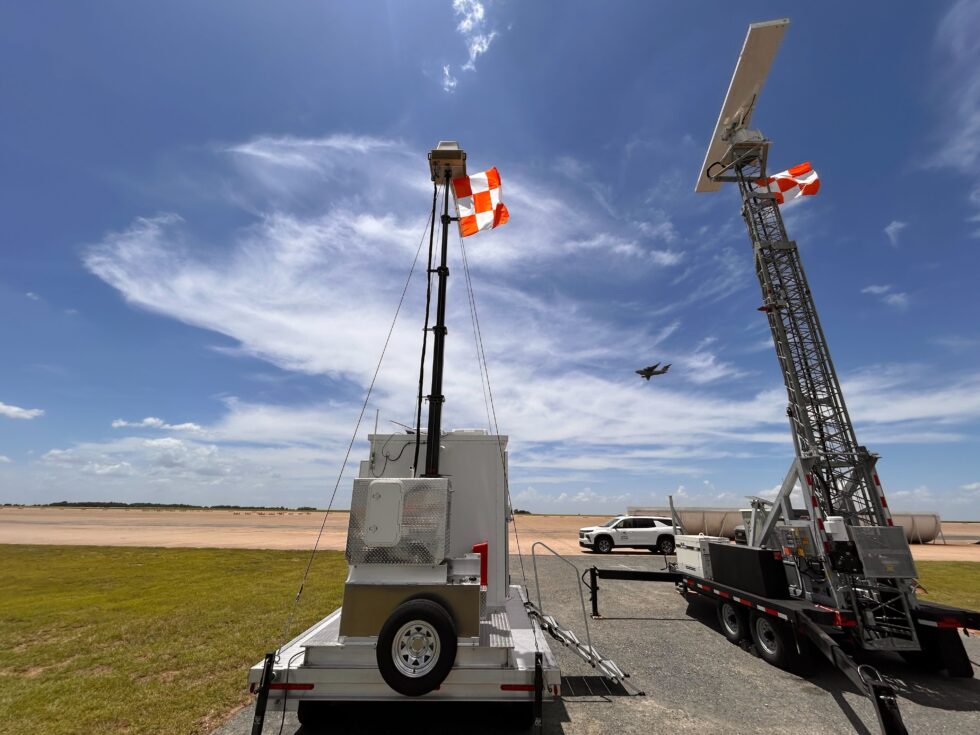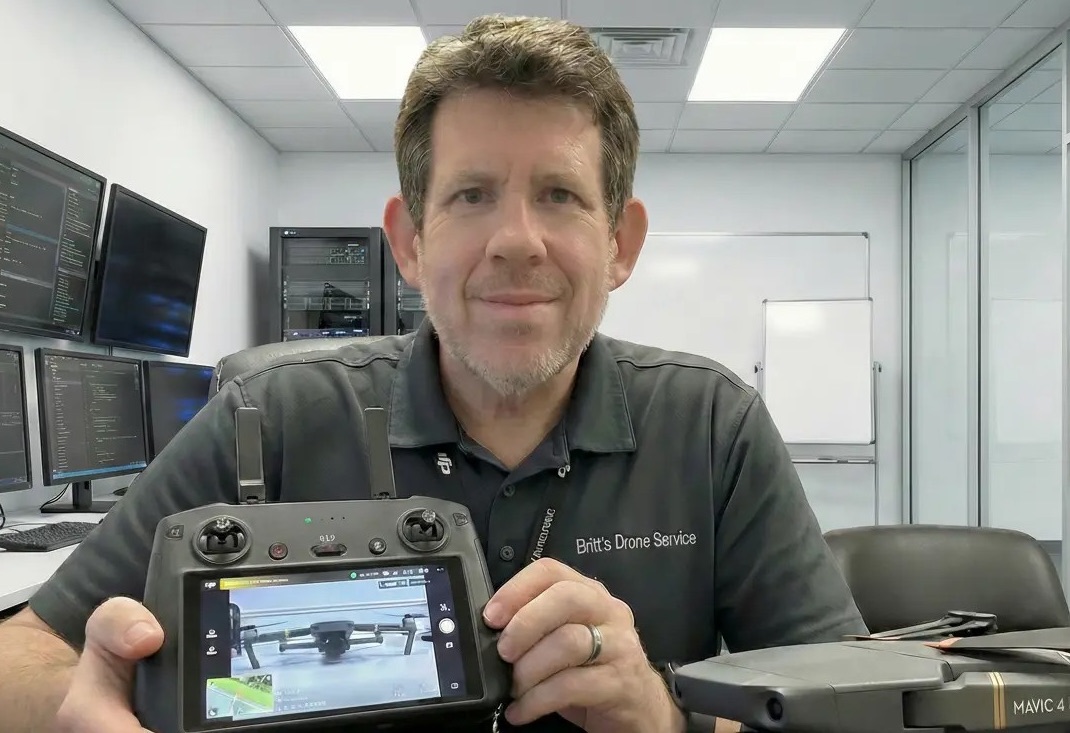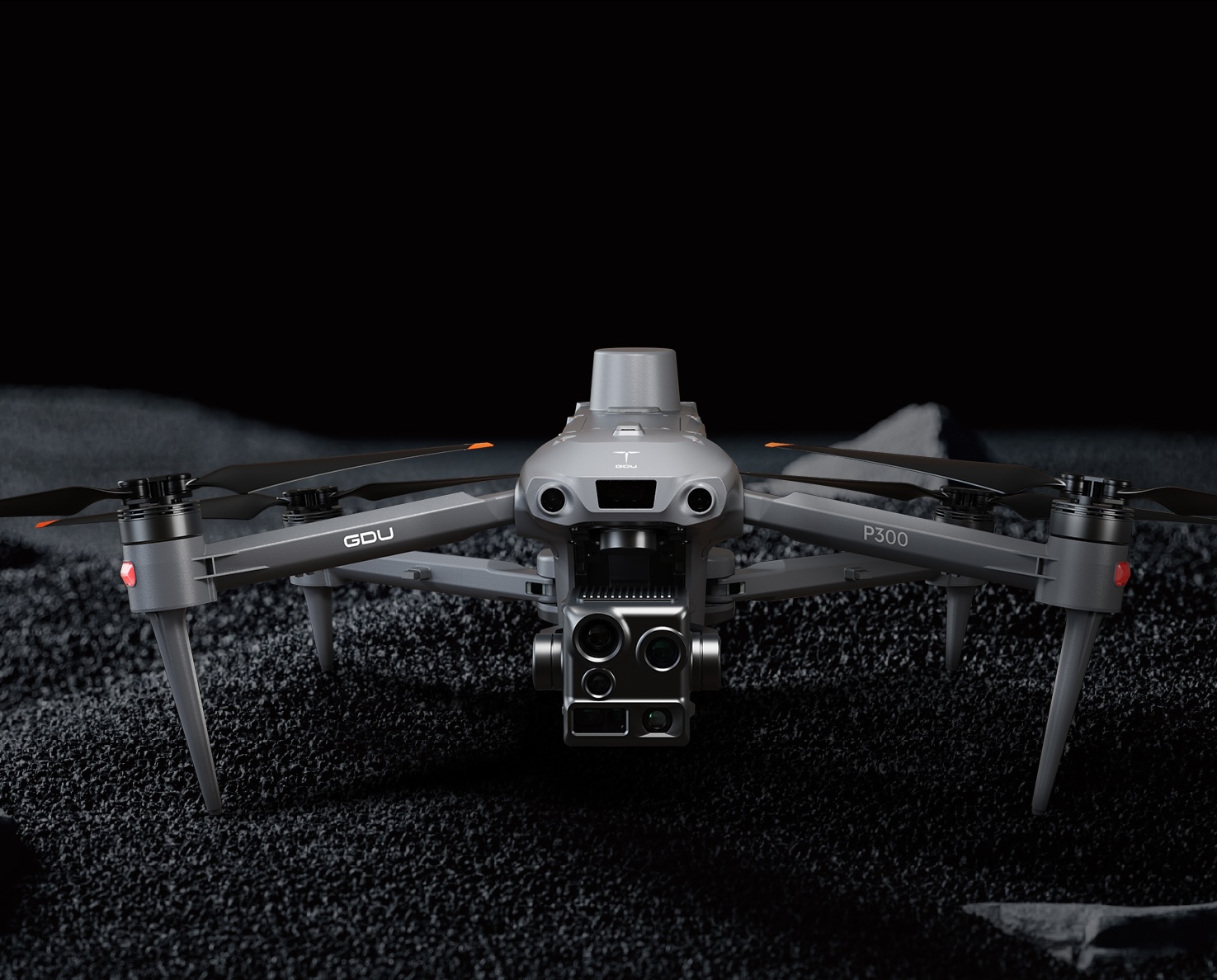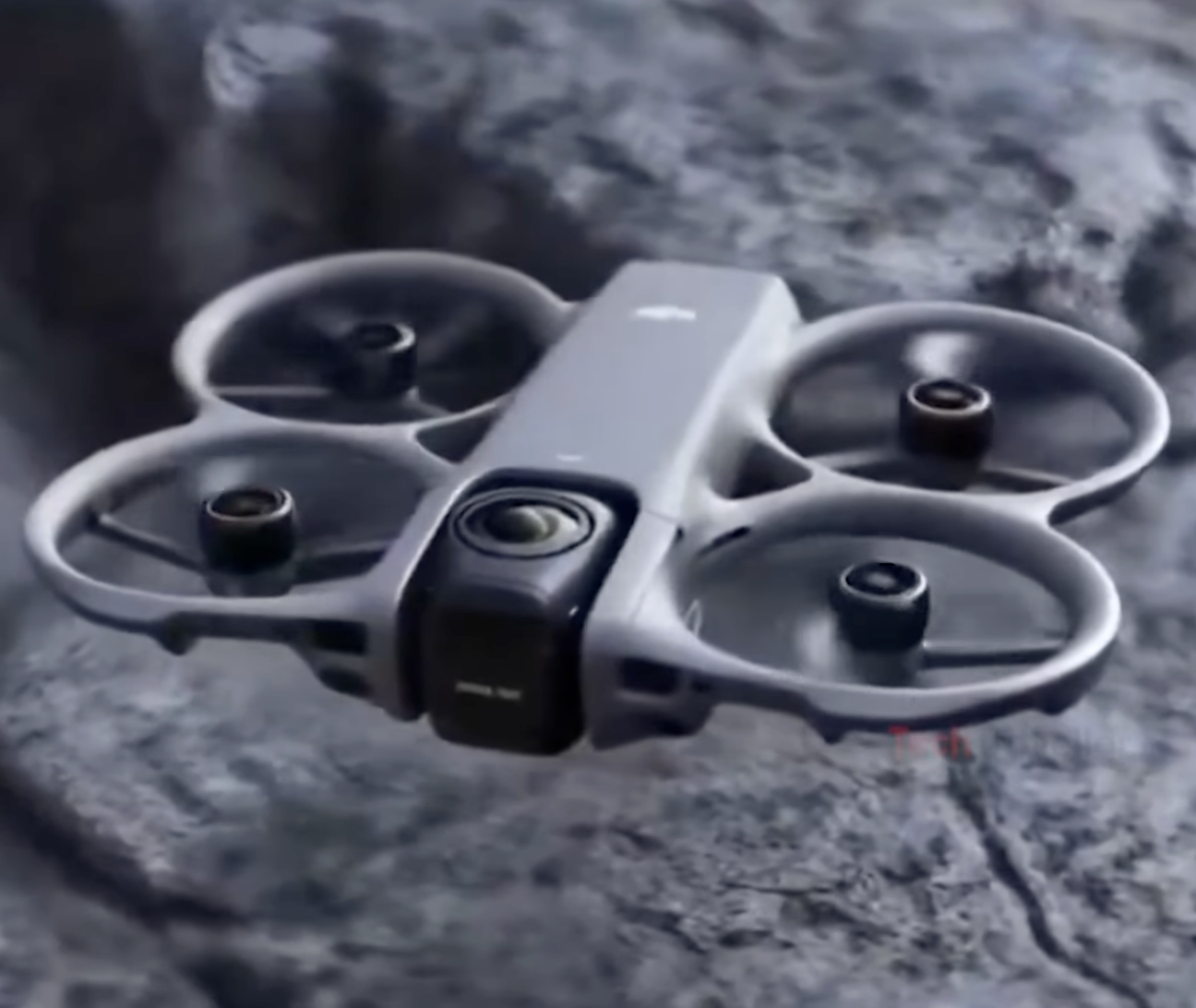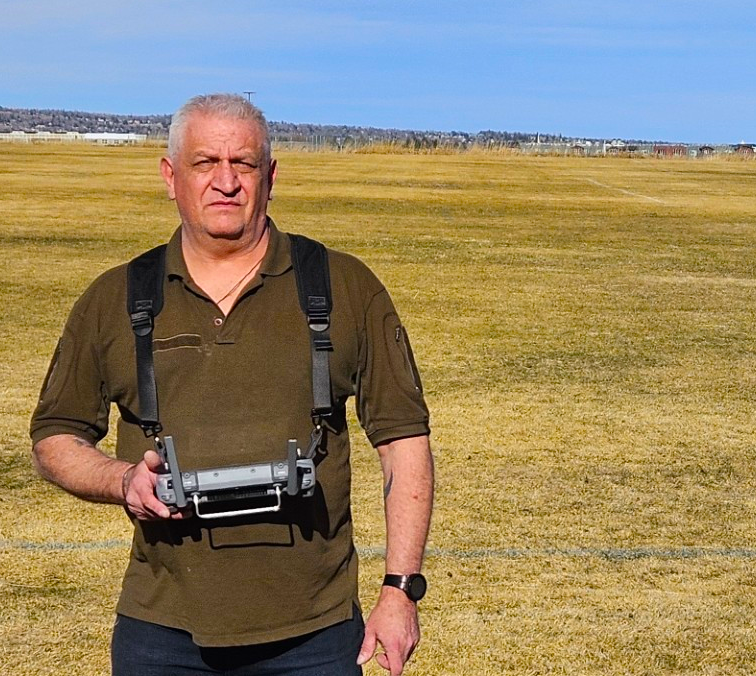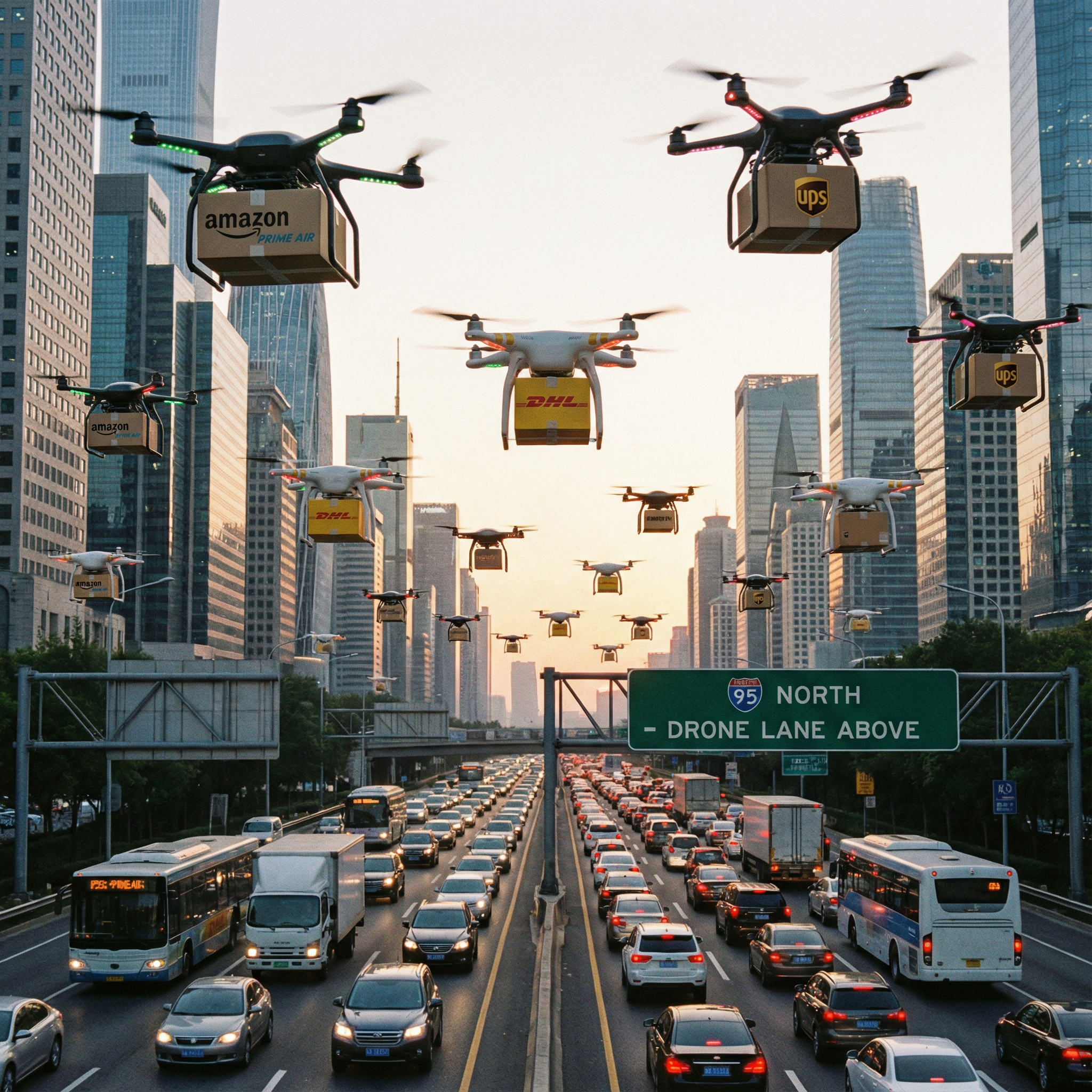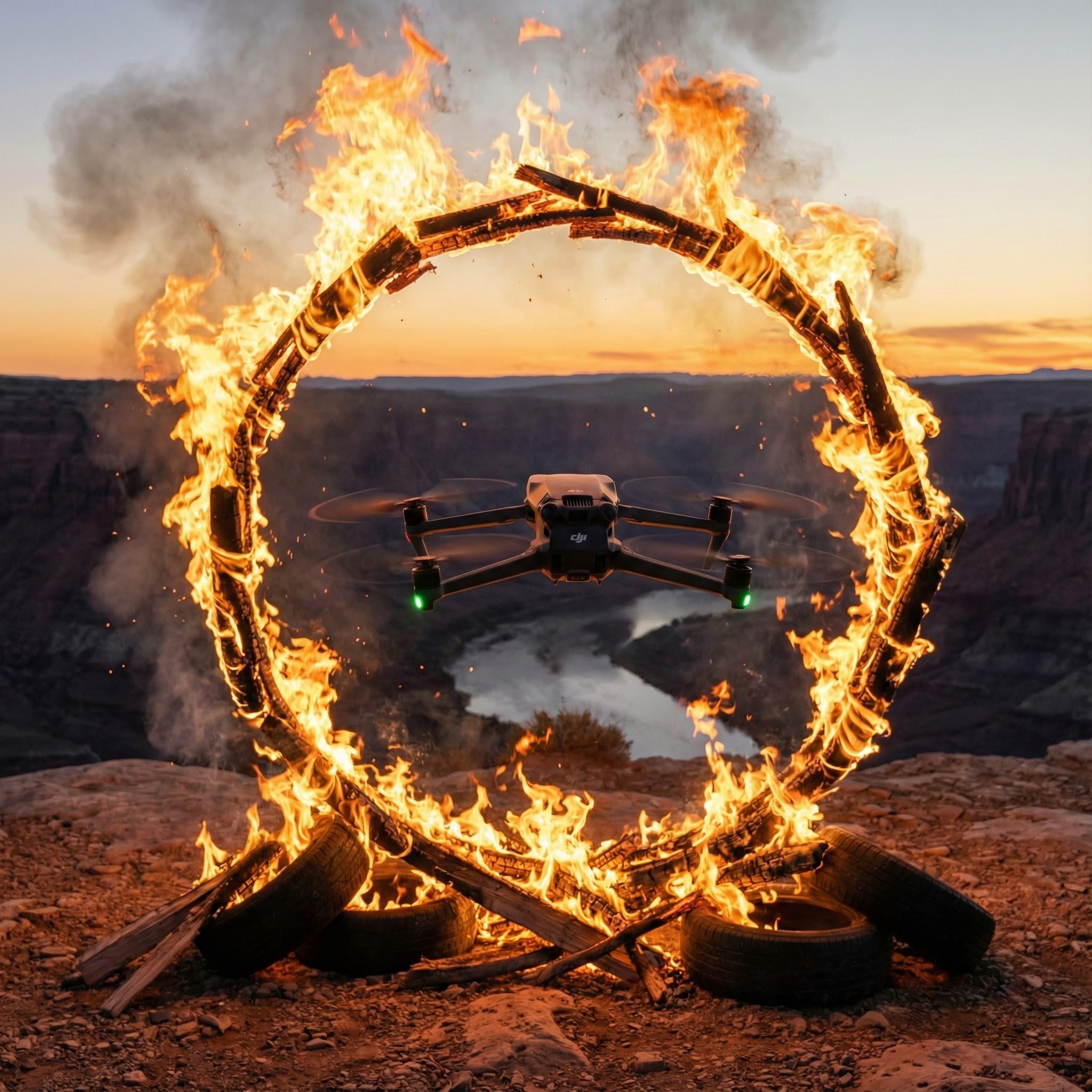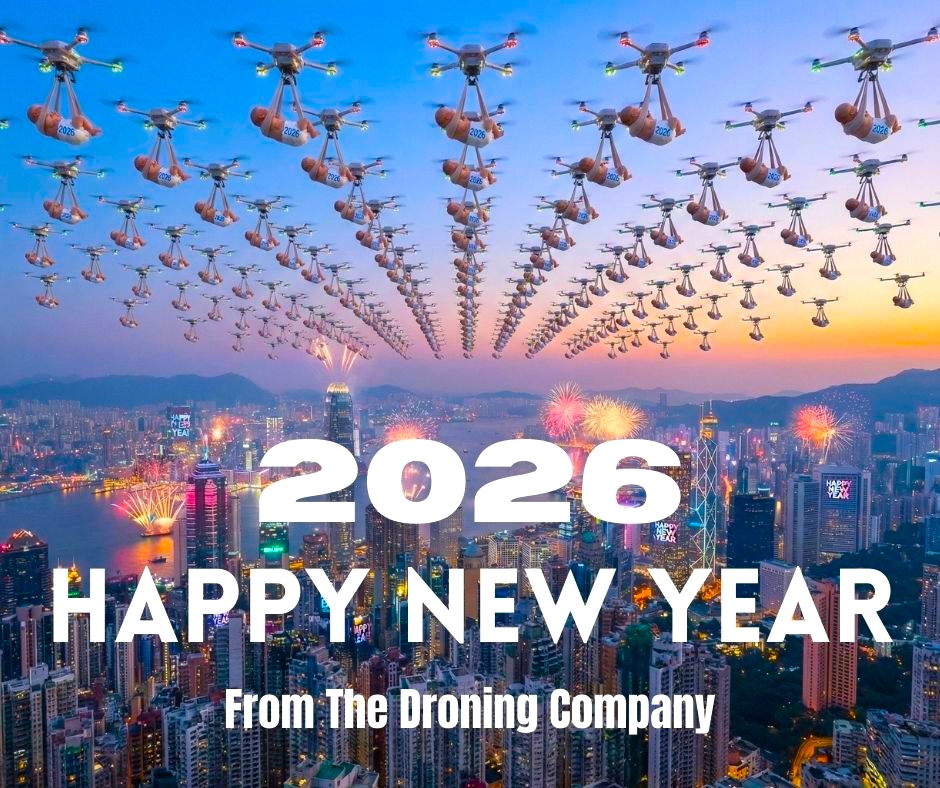Featured NewsProduct NewsDrone DeliveryDelivery Drones Get Work Done
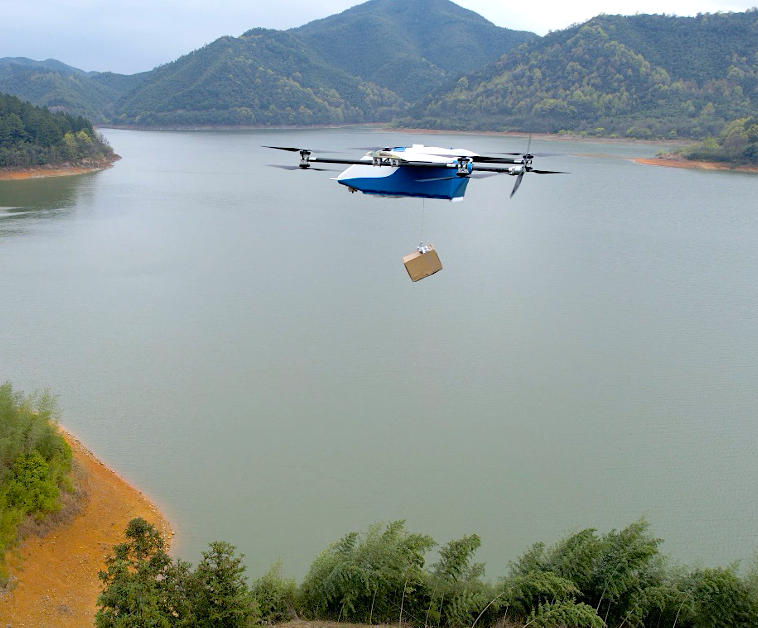
[Photo Credit: A2Z Drone Delivery]
04 January 2023
By Aaron Zhang, Founder and CEO of A2Z Drone Delivery, Inc.
Ask the average consumer to conjure an image of drone delivery and their most-likely image is of parcels being deposited on their front step or burritos and pizzas flying through their neighborhood. This misconception is likely born out of the earliest conceptualization of making deliveries with UAVs. While residential drone delivery continues to expand around the world, and the US market sees new regulatory allowances almost monthly, delivery drones are actually hard at work in a litany of applications.
It has now been 10 years since drone delivery entered the consumer lexicon largely from the lips of Amazon’s Jeff Bezos. In recent days, some of the early pioneers of drone delivery have made massive strides in bringing Bezos’ vision to reality with the FAA granting waivers for Zipline and Alphabet’s Wing to conduct Beyond Visual Line of Sight (BVLOS) deliveries without visual observers. This effectively boosts the range of these residential deliveries in the cities and towns where drone trials have been rapidly expanding over recent years.
Leveraging UAVs to support logistics operations certainly offers several advantages over traditional last-mile ground transportation. Battery-powered drones significantly slash emissions for delivery vehicles, and their autonomous capability reduces operational costs and fuel consumption. Commercial delivery drones can quickly reach remote areas and traverse these distances much faster than ground vehicles. Of course, transferring payloads from the UAV to the ground, safely and accurately is the key to the effectiveness of drone delivery.
Some drone delivery outfits have elected to dead drop parcels, bringing the delivery drone to a low hover before the package is simply dropped on location. Parachute delivery has also been in use by the likes of Zipline, especially in remote locations, and guided parachutes were introduced in recent months that allow pilots to drop a parcel from altitude and effectively steer the package to its destination. More common though, drone deliveries culminate with a parcel being deposited to the ground at the end of a drone delivery winch. A winch delivery strikes the ideal balance of safety and efficiency in delivery methods. It allows the drone to maintain altitude where spinning propellers are far from people and property, and minimizes the UAV’s time-on-station.
A2Z Drone Delivery developed the industry’s first purpose-built commercial drone delivery winch in 2019. Its innovative design quickly became the preferred drone winch for commercial deliveries and logistics operators. Companies like DroneUp adopted the winch as it rapidly scaled its residential delivery trials for partners like Walmart. While early adopters like DroneUp, Zipline and Wing have continued to expand these trials in the US, drone winches have proliferated commercial logistics operations in a wide array of commercial sectors where regulatory allowances make drone delivery a smart choice for expediting payloads delivery, often to hard-to-reach destinations.
The use cases for commercial drone delivery winches are truly diverse.
Streamlining Offshore Logistics
Operations interruptions on offshore oil platforms can be extremely costly. Currently, most operators rely on slow-moving, logistically-complicated ship deliveries to bring replacement parts to their platforms. Winch-equipped drones have enabled these operators to streamline deliveries of spare parts and tools, even medicines and mail for crew serving on the ocean platforms.

[Photo Credit: Nordic Unmanned]
Leveraging delivery drones enables shore-to-platform and inter-platform delivery of mission critical spare parts in a fraction of the time as traditional ship-born deliveries. Leveraging the latest drone delivery solutions, operators at Norway’s Nordic Unmanned worked with energy giant Equinor to conduct offshore logistics using drones. The first-of-its-kind mission saw cargo flights between offshore installations at the Gullfaks Field in the North Sea as well as between offshore installations and vessels. These drone deliveries not only mitigated operational downtime, but limited the manpower needed for offshore logistics, and enabled operators to reduce carbon emissions for these smaller parts deliveries.
With the drone winch’s tethered delivery system, delivery drones are able to steer well clear of the antennas and towers on an offshore energy platform. Leveraging an auto-release system, the drone can deposit payloads without personnel waiting to receive them as well. The A2Z Drone Delivery RDS2 drone winch can autodetect a tether that is fouled on a ship railing or other obstruction and release the tether to protect the drone. When retrieving payloads from the ground, it also automatically weighs payloads before reeling up the package to prevent overweight payloads from risking the drone.
Assisting First Responders
Rapidly deploying life-saving medical equipment to first responders in the field is another application for which drone winches are ideally suited. One piece of equipment that is routinely being delivered by drone is portable Automated External Defibrillators (AEDs). In fact, last year a drone-born defibrillator helped save a man’s life when he experienced cardiac issues while shoveling his driveway in Sweden!
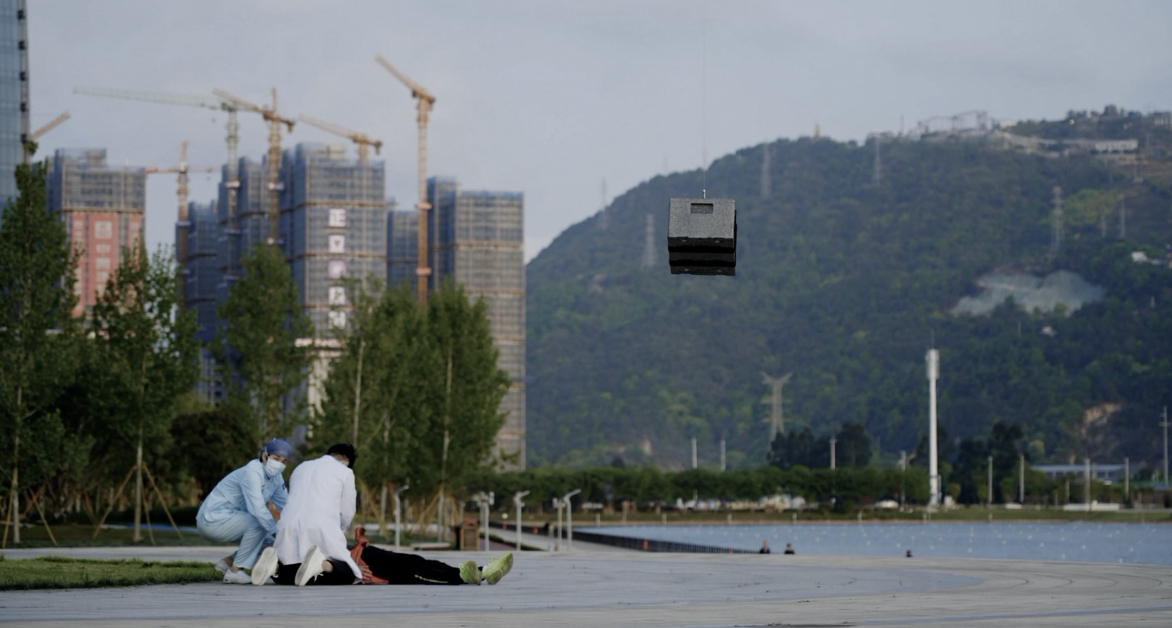
[Photo Credit: Antwork Technology]
Delivering life-saving technology like AEDs requires some finesse. Simply dropping a unit from the sky would likely damage the equipment, rendering it useless. Leveraging the drone winch, the AEDs can be lowered to the ground gently, and accurately, right to the waiting hands of first responders assisting a victim.
Proactive efforts to expand the rapid-deployment of AEDs is even becoming part of large event planning. During the recent 2023 Asian Games in China, drone service provider, Antwork Technology, deployed its drone-in-a-box solution equipped with a winch to safely and quickly lower AEDs to awaiting first responders. By delivering from altitude, the drone winch ensured spinning drone propellers would be kept far from the massive crowd attending the games. The winch’s quick-release mechanism also ensured responders on the ground did not have to take their attention from their patient to remove the payload.
Improving Search and Rescue
Search and rescue applications are another arena where drones equipped with delivery winches can have life-saving appeal. Researchers at the Southern Alberta Institute of Technology (SAIT) have demonstrated the value of drone delivery platforms to assist in search and rescue operations, by providing remote guided medical triage for simulated injured hikers. Leveraging remote medical triage helps buy rescuers invaluable time to reach victims and extract them to a trauma center.
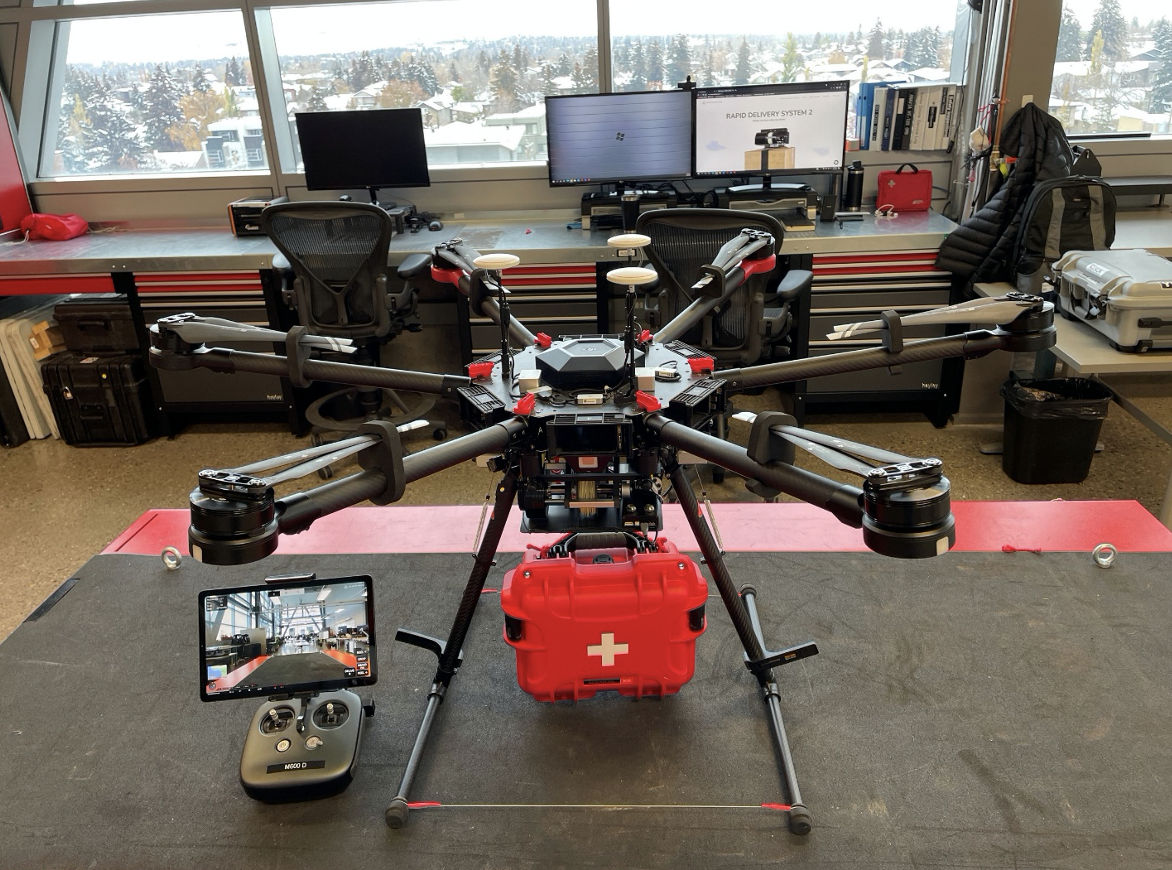
[Photo Credit: Southern Alberta Institute of Technology]
In this testing, researchers deposited a remote medical kit and communications device to simulated injured hikers using a drone winch, then connected them directly to a trauma specialist who was able to successfully walk them through applying several trauma treatments, including gauze packing, tourniquet and clamp, etc.
SAIT researchers, in partnership with the University of Calgary, one of Canada’s largest health facilities, employed drones outfitted with a drone winch, to conduct its proof-of-concept tests. The winch drone allowed medical kits and communications devices to be lowered with precision to simulated downed hikers from altitude, which ensured spinning propellers were kept far from the “hiker” and surrounding trees, and enabled the drone to maintain its guided telemetry connection amongst undulating terrain.
What’s Next for Drone Delivery?
Alongside the rapid development of the commercial delivery drone platforms and other drone delivery solutions, the commercial UAV industry has also been improving autonomous capabilities for drone delivery. Platforms like A2Z Drone Delivery’s Pelican long-range, heavy-lift airframe allow pilots to simply tap waypoints into a touch screen ground control station and monitor the drone as it performs deliveries entirely autonomously. Other industry leaders continue to refine detect-and-avoid technology, air traffic control systems for drones, and other solutions that will come together to form the drone delivery ecosystem of the future. The next frontier for drone delivery to truly scale will be the development of dedicated infrastructure to support that growth. While trained pilots will always be necessary to oversee commercial drone deliveries, laying a user-friendly shared infrastructure for UAV payload delivery will drastically expand access to this game-changing logistics paradigm for businesses and individuals making drone delivery a tool for everyone to put to work.
About Aaron Zhang
Aaron Zhang is the Founder and CEO of A2Z Drone Delivery, Inc., which is developing innovative solutions to enable safe, accurate and low-noise drone deliveries. Focused on last-mile UAV delivery systems, A2Z Drone Delivery is creating UAV delivery platforms capable of pushing drone delivery into the mainstream of logistics operations. Based in Torrance, C.A., A2Z Drone Delivery originated as a drone delivery project at Brown University in 2016 and now services customers around the world which are leveraging its technology for a diverse array of applications.

